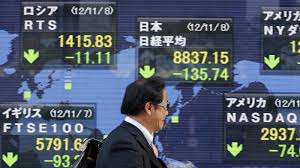I. Economic and Financial Developments in Japan
I will first explain economic and financial developments in Japan.
Japan’s economy has been on a moderate expanding trend, although exports and production have been affected by the slowdown in overseas economies. Looking at this in more detail, Japan’s exports and production have shown some weakness recently, mainly in terms of capital goods and IT-related goods specific to China. However, domestic demand has continued to be firm. With corporate profits having stayed at favorable levels on the whole, albeit with some weakness observed in part, business fixed investment has continued on an increasing trend. Private consumption also has been increasing moderately, albeit with fluctuations, against the background of steady improvement in the employment and income situation. Going forward, Japan’s economy is likely to continue on a moderate expanding trend, despite being affected by the slowdown in overseas economies for the time being. Risks to the outlook are skewed to the downside, particularly regarding developments in overseas economies, including the consequences of protectionist moves, developments in the Chinese economy, and the degree of progress in global adjustments in IT-related goods.
On the price front, the year-on-year rate of change in the consumer price index (CPI) has been positive but has continued to show relatively weak developments compared to the economic expansion and the labor market tightening. Recently, however, firms increasingly have reflected rises in prices of raw materials and personnel expenses in their prices. As such moves continue to spread with the output gap remaining positive, people’s inflation expectations are projected to rise gradually. The momentum toward achieving the price stability target is maintained, and the year-on-year rate of change in the CPI is likely to increase gradually toward 2 percent.

II. Conduct of Monetary Policy
Next, I will explain the Bank’s conduct of monetary policy.
The Bank has been conducting powerful monetary easing under the framework of “Quantitative and Qualitative Monetary Easing (QQE) with Yield Curve Control.” In terms of yield curve control, with a view to facilitating the formation of the yield curve that is considered most appropriate for achieving the price stability target, the Bank has conducted purchases of Japanese government bonds (JGBs) under the guideline for market operations, in which it sets the short-term policy interest rate at minus 0.1 percent and the target level of 10-year JGB yields at around zero percent.
Japan’s economy has continued on a moderate expanding trend and already is no longer in deflation in the sense of a sustained decline in prices. However, it is likely to still take time to achieve the price stability target of 2 percent. In addition, there remain high uncertainties regarding the outlook for economic activity and prices including developments in overseas economies. Based on this recognition, the Bank considers it important to make clearer its policy stance to persistently continue with powerful monetary easing toward achieving the price stability target. Thus, the Bank decided last month to clarify forward guidance for policy rates introduced in July 2018 and maintain the current extremely low levels of short- and long-term interest rates for an extended period of time, at least through around spring 2020, taking into account uncertainties regarding economic activity and prices including developments in overseas economies and the effects of the scheduled consumption tax hike. The Bank also decided to take such measures as the expansion of eligible collateral for the Bank’s provision of credit, thereby contributing to smooth fund-provisioning as well as to securing market functioning. These measures likely will strengthen public confidence in continuing with powerful monetary easing, thereby further ensuring the achievement of the price stability target and leading to stability in financial markets.
The Bank will continue to examine the risks considered most relevant to the conduct of monetary policy and conduct its policy in an appropriate manner, taking account of developments in economic activity and prices as well as financial conditions.
Thank you..












